Mini-trampoline workouts offer powerful joint protection for aging bodies. The rebounding surface reduces impact forces by up to 87% compared to walking on pavement, while still strengthening muscles that support your joints. You’ll improve balance, build bone density, and burn calories effectively—all without the joint strain of traditional exercises. Start with just 5-10 minutes of gentle bouncing and gradually increase as your stability improves. The science behind this gentle bouncing reveals surprising benefits.
The Science Behind Low-Impact Rebounding for Joint Protection
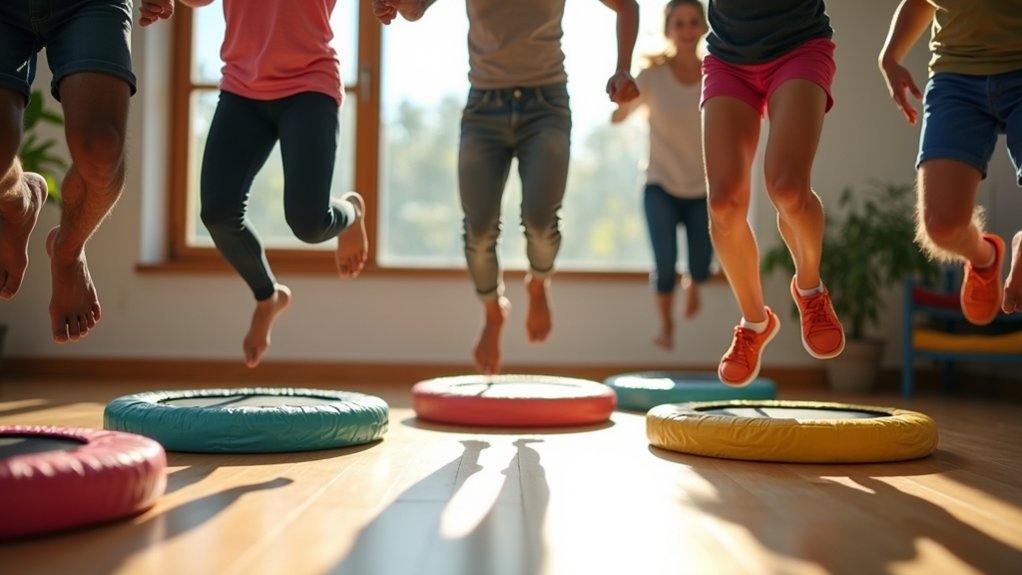
While traditional high-impact exercises often leave joints aching, mini-trampoline workouts offer a revolutionary alternative by reducing impact forces by an impressive 80-87% compared to walking or running on pavement.
Mini-trampolines revolutionize exercise by slashing impact forces 80-87% compared to running or walking on hard surfaces.
This remarkable shock absorption protects your knees, ankles, hips, and spine from the pounding that typically causes orthopedic injuries. The trampoline’s flexible surface disperses force throughout your body instead of concentrating it at impact points.
This means you’ll experience less wear on your cartilage and joint structures over time. You’re fundamentally getting cardiovascular benefits without the joint strain—a vital advantage as you age.
For those with existing joint concerns or anyone looking to preserve long-term mobility, rebounding delivers effective exercise while minimizing mechanical stress on your body’s structural components. The workout simultaneously improves dynamic balance and reduces fall risk, which becomes increasingly important as we age.
Building Joint-Supporting Muscle Through Trampoline Exercise
The protection rebounding offers your joints pairs perfectly with its remarkable muscle-building benefits. When you bounce, you’re simultaneously engaging multiple muscle groups that support and stabilize your joints. Your legs, core, arms, and numerous stabilizing muscles work together, creating balanced strength that reduces joint stress.
| Muscle Group | Function | Joint Benefit |
|---|---|---|
| Core | Stabilizes spine | Reduces back pressure |
| Legs | Powers movement | Supports knees & ankles |
| Arms | Maintains balance | Protects shoulders |
Unlike traditional workouts, trampoline exercises strengthen muscles around joints without harmful impact. You’ll burn calories effectively while building functional strength, particularly beneficial if you have arthritis. The repetitive bouncing motion encourages muscle growth while feeling less strenuous than comparable activities like running, making it easier to maintain consistent exercise habits. Studies show that regular trampoline exercises can significantly improve bone density, which is crucial for joint health and preventing fractures as we age.
Balance Training Benefits for Joint Stability and Fall Prevention
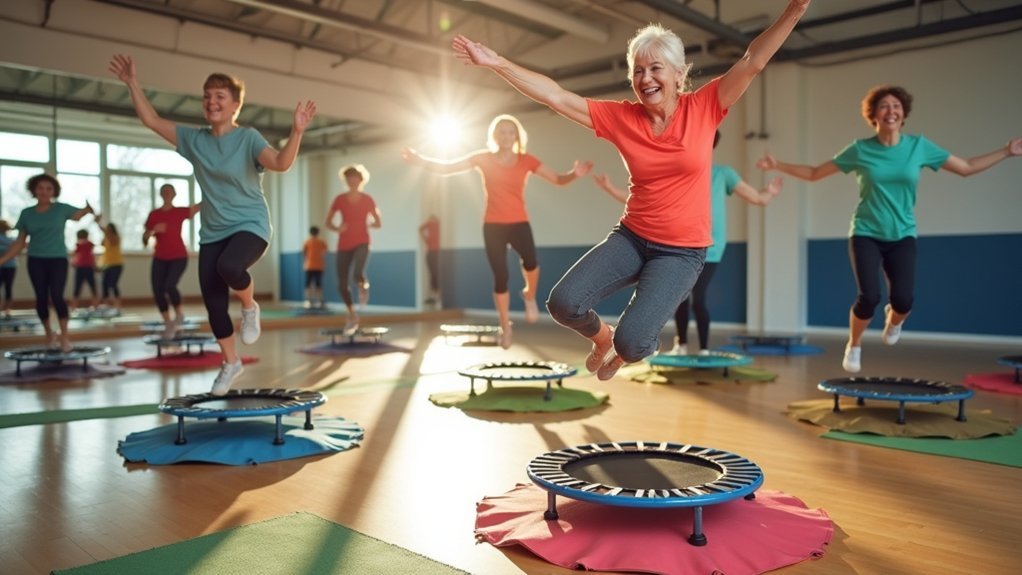
Balance training on a mini-trampoline offers exceptional benefits for joint stability and fall prevention that extend far beyond traditional exercises.
You’ll strengthen the muscles that support your joints while improving postural control, reducing your fall risk by up to 37% and lowering fracture incidence by over 60%.
The trampoline’s unstable surface naturally challenges your proprioception and coordination, enhancing your ability to recover from stumbles.
As you practice, your neuromuscular pathways strengthen, improving reaction time and spatial awareness. This training particularly benefits those with chronic joint instability by correcting abnormal movement patterns. This approach is highly effective for core strength development, which is essential for supporting the spine and maintaining whole-body stability.
You can progress gradually by increasing difficulty—try one-legged stands, closing your eyes, or adding arm movements.
Consistent practice several times weekly will integrate strength, coordination, and balance improvements for greater confidence in daily activities.
Strengthening Aging Bones While Preserving Joint Health
Mini-trampolines offer a powerful strategy for strengthening aging bones without sacrificing joint health. As you bounce, the impact stimulates bone development while the elastic surface absorbs shock that would otherwise stress your joints.
Research shows that regular rebounding can greatly increase bone mineral density, particularly in the hip and spine—crucial areas susceptible to osteoporotic fractures. You’ll build supporting muscles simultaneously, creating a protective framework around vulnerable joints. Regular rebounding provides a low-impact exercise that is particularly beneficial for seniors with arthritis.
| Trampoline Benefit | Bone Impact | Joint Preservation |
|---|---|---|
| Low-impact motion | Stimulates bone growth | Reduces joint stress |
| Multi-muscle engagement | Strengthens support structure | Enhances stability |
| Gravitational stress | Increases bone density | Protects cartilage |
| Improved circulation | Delivers nutrients to bones | Promotes joint healing |
| Fall prevention | Reduces fracture risk | Maintains mobility |
Just 12 weeks of consistent trampolining can measurably improve bone density, especially for postmenopausal women at highest risk for osteoporosis.
Personalized Rebounding Programs for Different Mobility Levels
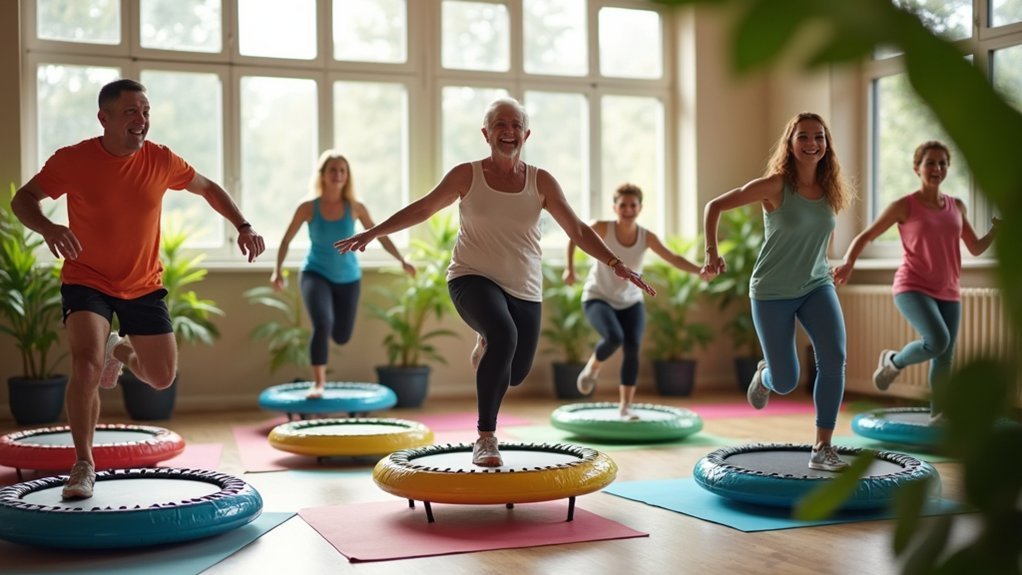
Designing your rebounding program around personal mobility needs guarantees you’ll get maximum benefits while minimizing risks.
Personalize your rebounding routine to match your mobility level—it’s the key to safe, effective results.
If you’re a beginner, start with simple marching in place for 5-10 minutes, using stability bars for support.
As an intermediate bouncer, incorporate squats, lunges, and core twists during 20-30 minute sessions. Track your progress through app-based coaching that offers real-time feedback on your technique. The 3D sensor technology can help provide instant feedback on your rebounding form to prevent potential injuries.
Advanced users can integrate HIIT intervals with complex movement patterns, combining upper body, core, and leg exercises for total-body conditioning.
For those with chronic conditions or limited mobility, opt for slow-paced exercises with controlled movements. Use handles or elastic bands for support, and gradually increase intensity based on your tolerance levels.
Frequently Asked Questions
How Long Does It Take to See Joint Pain Improvements?
You’ll typically notice joint pain improvements within 2-4 weeks of consistent rebounding. Twice-weekly sessions lasting 20-60 minutes can yield results, with more significant benefits appearing after 8-12 weeks of regular practice.
Can Mini-Trampolines Be Used After Joint Replacement Surgery?
You can use mini-trampolines after joint replacement surgery, but only after your doctor’s clearance. Start with gentle bounces, use models with stability handles, and follow a gradual progression in your rehabilitation program.
Do Trampoline Workouts Help With Specific Conditions Like Plantar Fasciitis?
Trampoline workouts can help with plantar fasciitis by stretching your plantar fascia and improving foot alignment. You’ll need proper support though – wear supportive shoes or wrap your feet to minimize stress while rebounding.
How Do Rebounding Benefits Compare to Water Aerobics for Joints?
Both rebounding and water aerobics protect your joints while exercising. You’ll experience less impact with water’s buoyancy, while rebounding’s cushioning surface distributes landing forces evenly. They’re equally beneficial for joint-friendly workouts.
Are Mini-Trampolines Safe for Those With Osteoporosis or Bone Fragility?
If you have osteoporosis or bone fragility, mini-trampolines aren’t generally recommended due to fall risks and potential spine stress. You’ll benefit more from safer alternatives like water exercises or gentle weight-bearing activities.
In Summary
You’ve discovered a joint-friendly path to fitness that’s fun and effective. Whether you’re dealing with arthritis or simply protecting your joints for the future, mini-trampoline workouts provide the perfect balance of intensity and gentleness. You’ll build strength, improve balance, and support bone health—all while reducing impact. Start with short sessions and gradually increase as your confidence grows. Your joints will thank you.
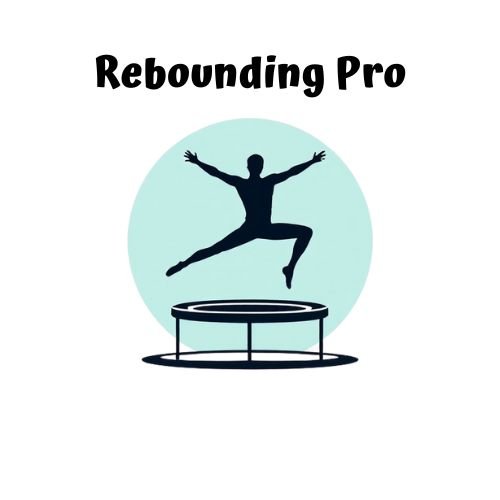
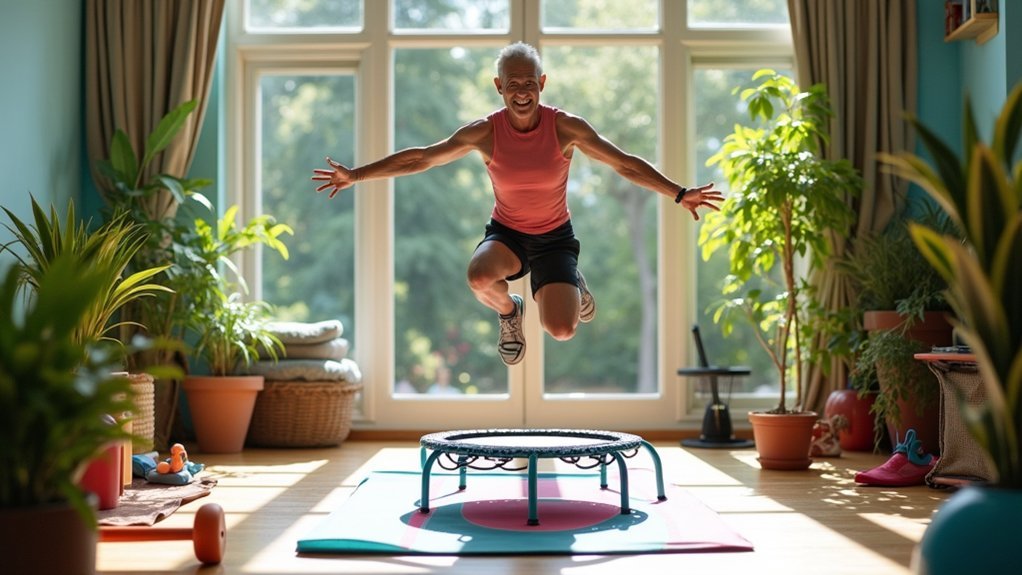


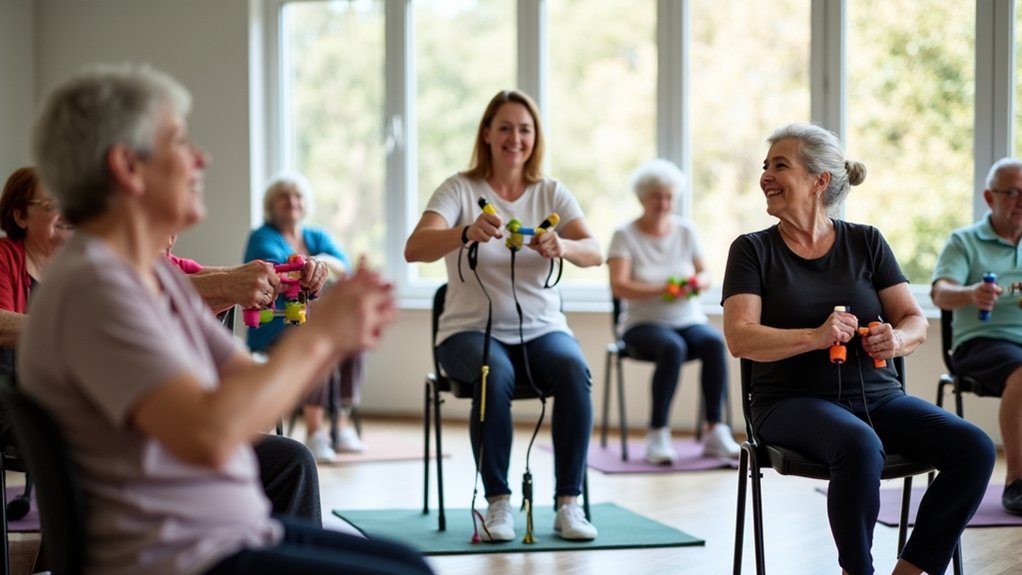
Leave a Reply